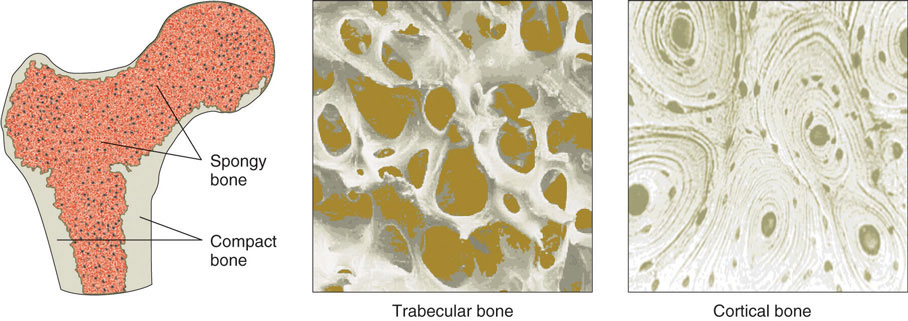What are the two types of bone tissue? How do they differ in structure and function?
1 Answer
There are two types of bony tissue: compact and spongy. Both are with solid bony matrix secreted by osteoblast cells but arrangement of bony tissue with respect to space occupying marrow is different.
Explanation:
In bony tissue young osteoblasts or young osteocytes remain arranged in concentric lines: called lacunae. In between rows of cells, there are concentric layers of bony matrix: called lamellae.
In compact bone, such concentric lacunae and lamellae form a small unit called osteon, with a microscopic Haversian canal running through its centre. Blood vessels and lymphatic vessels are present inside Haversian canal which respectively provide nourishment to the tissue and drainage. Nerve branches are also present in Haversian canal.
Compact bone, also called cortical bone, forms the shaft of long bones and inside such long bone a well defined marrow cavity remains present. Yellow bone marrow is present within marrow cavity of shaft.
Compared to this, marrow cavity in spongy bone is irregular, with a mesh work of bony tissue traversing through out. Bony beams of spongy bone are called trabeculae while marrow-filled irregular cavities are called cancelli. Spongy bone is also called trabecular bone/cancellous bone.
Spongy bone is present in heads of long bones; it forms all irregular bones including vertebrae, girdles, etc. and is stronger than compact bone. Moreover red bone marrow is present in spongy bone marrow cavities where blood cells are generated.
( )
)
